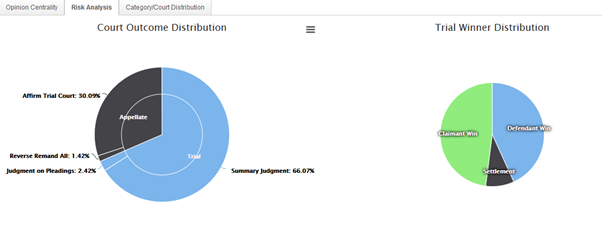You just visited a new city for the weekend. A busy schedule holds you from eating all day so you decide to pass by the food court in the evening heading home. At the counter, you order the exact same lettuce-tomato-bacon-mayo-garlic sandwich your local diner at home prepares. Now before that first bite, there is always hope that it will be as delicious as the one you're used to, with that tingling sensation of joy down your spine. Truth be told, in more than one case, you will be disappointed. Sadly. You always hope for the same amazing outcome, but you forget that the environment is different. That you might not be in the same mental state, or maybe the ambient temperatures aren't the same.
Litigations are very similar to these sandwiches. They come in a number of combos and tastes which might render completely different outcomes. Many practitioners will assume that just because they happened to have a success with a previous case, that the following ones will be a walk in the park. This is where you and the disappointed sandwich buyer share a common feeling. Except yours costs you a loss in the case and a significant retraction of your rapport.
Enter legal analytics. A combination of a mine of legal data with the forte of data analytics. According to Law360, in the US, sixty-eight percent of legal technology professionals anticipate the investment in legal analytics by their organizations to increase over the next two years. Already, many organizations and law firms have embraced data analytics in hopes of becoming more effective with their transactions.

So how important are legal analytics in aiding you to get a truer picture of a case outcome? Legal analytics is all about transforming and processing legal data (the actual text) into measurable quantitative knowledge. With a pile of document files on cases, you might not be able to see transcending patterns or disparities in the various ways of approach. With data analytics, these parameters will be revealed to you. It is from the organization of this quantitative knowledge by an analytics tool that we are able to understand the underlying patterns of data.
Hidden trends and patterns become clear, something that would have taken sweat and a lot of tears if manually done. From an analysis of patterns using a number of factors, we can then be able to make predictions on, for instance, an examiner's recommendation for a patent application, or maybe pre-empt a holding in litigation, or how we will focus on a settlement from forecasting a legal case outcome.
So in general, the empowerment that comes with legal analytics is unlike anything in modern history. It is a completely new paradigm shift in the way we see the law.
However, it has the flood of analytics tools in the market has somehow had a degrading effect on the productivity of legal firms. Law firms are not sure of what tools will maximize their activity. As a result, a lot of money is invested in less-than-average analytics tools which will cost even more time to know how to operate or use the scarce results they give. You might even find a few well-seasoned practitioners opting to revert to the good old' manual research because it is less strenuous.
Not all of us can rely on intuition and the sage that older practitioners possess. Therefore it is still of essence that we use a tool plays a part of the wisdom for us. In seconds. Juritool™ is the tool that delivers knowledge and wisdom at the same time, even to a neophyte.
When you search a case on Juritool™, you don't just get results. You get wisdom. Case DNA is a feature that's able to siphon out appropriate information from numerous files on your database. It collects the legal facts from different files and with a click, be able to explode the case into a visual map connecting sources, verdicts, jurisdictions and many parameters. It will also suggest similar cases, based on your search, which you can read on to understand the handling of such cases.
Using this mode of categorizing information, you will begin to see your case as a multi-dimension subject with economic, socio-political or even religious forces playing a major part in the background. From you will be in a much better position to see how the case might unfold and even be decided. This is the insight that a practitioner without these tools might never attain.
In summary, exploitable knowledge is becoming an asset in the legal field. Juritool™ has the necessary capability to empower you with this knowledge. It will ensure are always ahead of the pack.